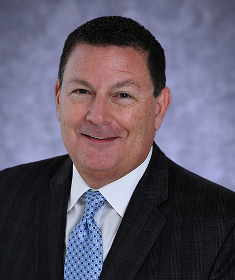Executive Calling
The Wisdom Behind Calling Higher

First published on SalesandMarketing.com, May 2016.
For several decades, sales leaders and managers have favored the practice of calling higher in customer organizations. Over the same time span, this idea has persisted but the business environment has undergone many changes. Technology has changed the way we sell and the way our customers shop and buy. Recessions have given way to recoveries, and yet we still take it for granted that calling higher leads to larger sales, more revenue, and more profit.
Senior executives, the target of these elevated calls,report that sales representatives who truly bring value into these meetings are few and far between.
Still a Good Idea?
Is calling higher still a good idea? How does it work in practice? What does it look like when it works? What can go wrong? What supporting practices must be in place in order for executive calls to be effective? And, most importantly, do your customer executives see value in the practice?
We Asked Executives
Wilson Learning interviewed senior executives about their role in their organization, their role in purchasing, and their experiences working with vendor sales reps.
“In a sixty-hour workweek, there are only so many thirty-minute increments” “. . . it is amazing how many representatives call to get acquainted” . . . “I see them all once; then I select who I will see again.”
The results of these discussions offer strong guidance about when calling higher works, when it doesn’t work, and how it works when it works well.
Executives Don’t Buy Products
Senior executives do not make buying decisions; they empower and support others to purchase products or services. Senior executives are, however, very interested in making sure purchasing decisions and processes fulfill the strategic aims of their organization. While they don’t make buying decisions, they do define the context in which those decisions find meaning, demonstrate purpose, and drive performance. Senior executives tend to have an adverse reaction to a meeting that starts to look, sound, and smell like a sales call.
Two Key Messages
- Senior executives meet with sales reps for their own reasons. They are quite clear about their criteria for getting involved at this stage, and they have high expectations the meeting will meet these criteria.
- Senior executives take meetings when trusted colleagues ask them. Executives coach their management teams to make decisions about when to involve them. These trusted managers are your best access to discover what senior executives are concerned with and what their expectations are when meeting with vendors.
These two messages have profound implications for sales representatives seeking to call high in their customer organizations.
Know the Customer Organization: Multiple Points of Contact
Sales representatives need to build and explore a network of multiple connections within their customer organizations in order to gain a full understanding of how the organization’s strategy plays out vertically and horizontally across the organization. Salespeople who can bring a thoroughly informed perspective of the customer organization find that senior executives welcome their insights.
Calling Higher: Elevate the Focus of the Conversation
When calling higher, the focus of the conversation needs to be higher as well. Instead of focusing on discovering needs, matching features to needs, or comparing specifications of competing solutions, salespeople need to be prepared to deliver business-level value when they meet with senior executives. This means they need to be prepared to demonstrate a broad knowledge of the customer’s industry and a deep knowledge of the customer organization’s strategic focus and short- and long-term goals. Senior executives expect you to know all of this walking in. They expect you to be familiar with the industry-wide issues they face every day and, to some extent, with current successes and shortcomings in executing their strategy. In short, senior executives have specific requirements that a meeting with a vendor representative will provide significant business value.
Create Business Value
So where does this business value come from? As it turns out, experienced salespeople can provide a valuable “consultant-like” perspective that is distinct enough from an executive’s own perspective to provide value. Salespeople who can successfully represent complex products or technical services and solutions most often have considerable experience across multiple industries. At a minimum, they know their own industry, their client organizations’ industries, and quite a bit about the customers of their client organizations. In the same way that binocular vision allows for depth perception, the salesperson’s perspective when added to the senior executive’s perspective can make sense of complexity and provide new insight into business activity.
Critical Success Factors
One way to collect and organize the information that will be the source of value to senior executives is by developing a multi-dimensional analysis of the critical success factors (CSFs) that impact the customer organization’s business operations.
Critical success factors can be defined as those few key areas of activity in which favorable results are absolutely necessary for an organization to achieve their goals. Simply speaking, CSFs are a means to an end.
For example:
- A financial services company that wants to ensure a personal touch is enabled by the efficiency of their IT infrastructure.
- A consumer goods company that wants to react quickest to their customers' changing demands needs to increase effectiveness of their supply chain management.
Characteristics of CSFs
Critical success factors can be both general to an industry and specific to one company, or even to one line of business within a company.
They can vary by level or function within the customer organization and can change over time. As the organization makes progress in executing their strategy, new and unexpected sources of criticality can arise.
Since all business activities are “linked” and to some degree impact business performance, an analysis of critical success factors can reveal both impending performance weaknesses and potential performance surges. In addition, a thorough CSF analysis presented to senior executives confirms the urgency to address the uncovered issues.
Executive Call Strategy
There are three clusters of activity critical to a successful executive call strategy:
- Actions taken before the call
- Actions taken while conducting the executive call
- Actions taken after the call
Before the Strategic Business Call
Before you can conduct a call with a senior executive, it is critical to call broadly in the customer organization to explore critical success factors at several levels in the organization. The business-level value you eventually deliver is discovered in both your research and in exploratory calls across the customer organization.
Conducting the Strategic Business Call
Successful calls with senior executives quickly deliver findings about critical success factors impacting the business results in the customer organization. Much of the call is spent in dialogue with customer executives to explore the implications and potential paths of action. Done well, senior executives will begin to freely share and explore these implications. It is important to conclude the conversation with an agreement for next steps.
Following Up After the Call
A well-executed and clearly presented CSF analysis inevitably leads to a productive, future-oriented conversation that typically identifies multiple actions for further attention. It doesn’t take much imagination to see the potential advantages of calling on senior executives. By calling widely throughout the customer organization and developing a multidimensional CSF analysis, you will be seen as the source of new insights into actions that protect or enhance business performance. Then your company’s solutions, products, and services will be seen as linked to these future performance gains.
Executive Calling: A Very Good Idea, When Executed Well!
Calling on senior executives is still a very good idea. Armed with careful preparation, and a disciplined approach to exploring the CSFs impacting the customer organization, successful sales representatives have proven the ability to deliver business value to senior executives. The sales representatives who can execute this kind of approach will quickly see revenue growth and increased profits.
更多信息请洽021-23571788。







 请填写此表格下载Executive Calling | The Wisdom Behind Calling Higher。
请填写此表格下载Executive Calling | The Wisdom Behind Calling Higher。





